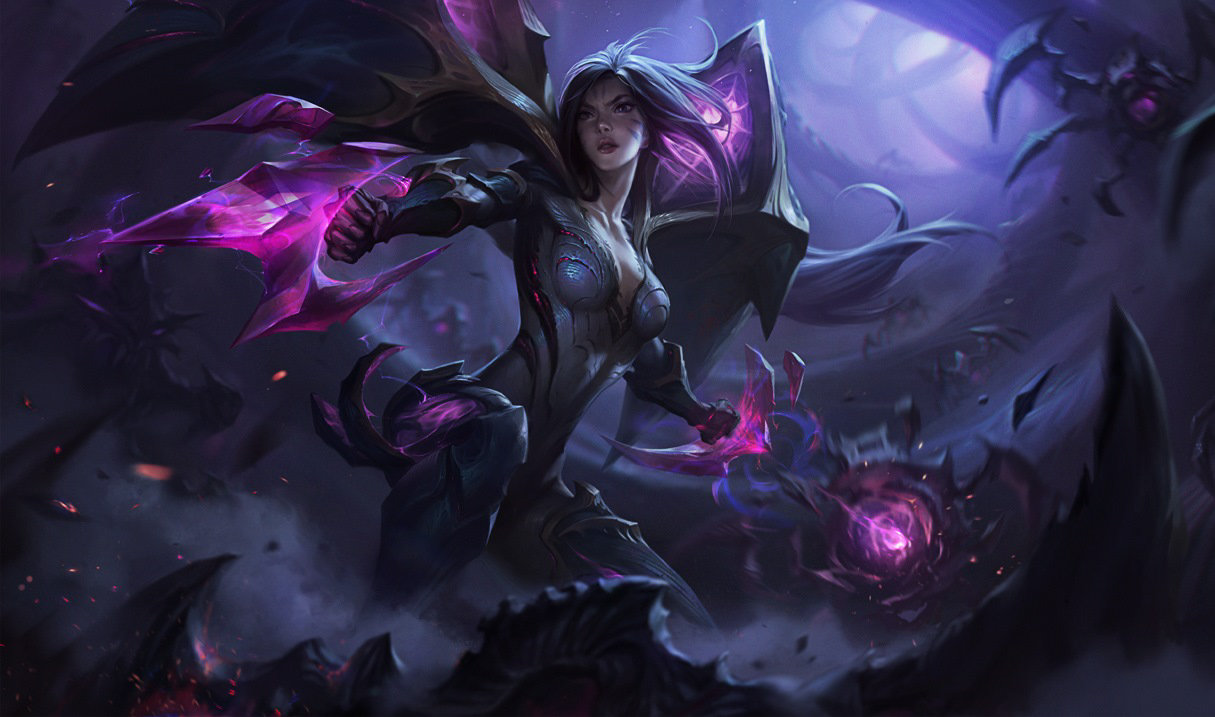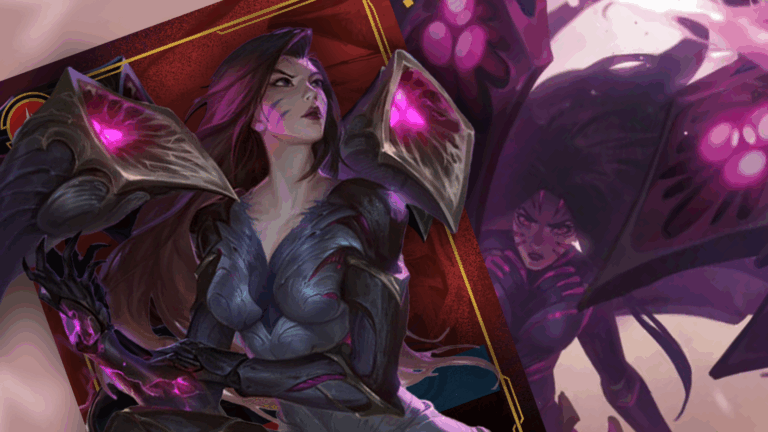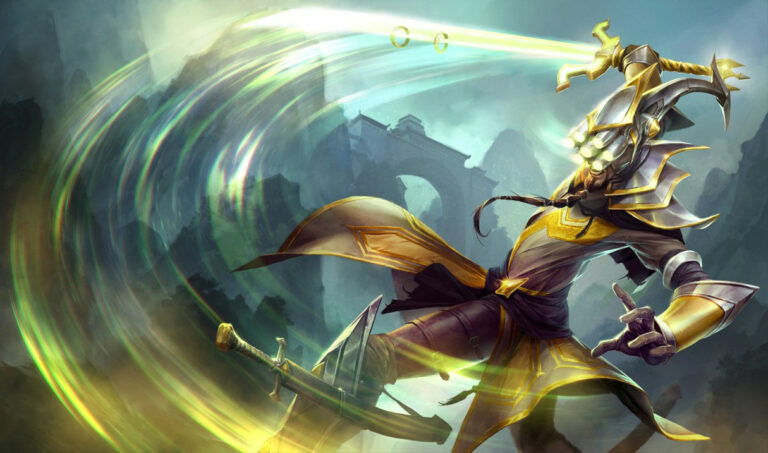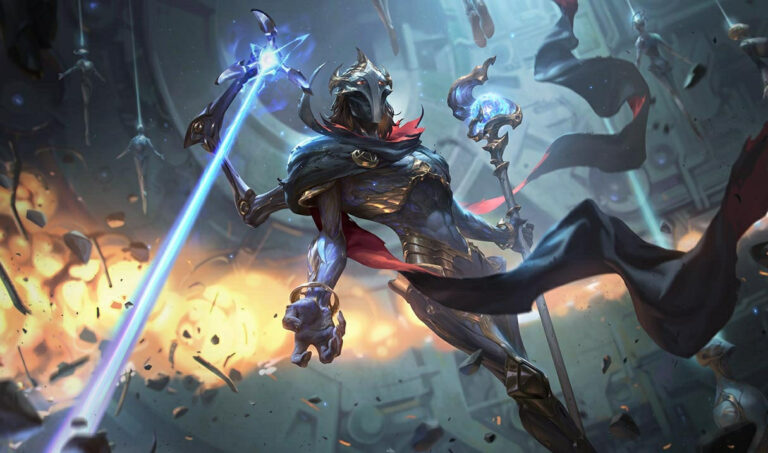Contents
Kai'Sa has recently been taking the world of Riftbound by storm. Ever since Origins' full preview came out, members of the community have been participating in online tournaments using Tabletop Simulator. With this, Kai'Sa has easily become one of the most popular decks in the format, rising to the top of the metagame with the winrate to show for it.
Playing as a traditional tempo deck, Kai'Sa is definitely one of the best decks to get started with if you're coming over from another card game especially. The deck is designed to win through cheap threats that either grow or redraw, and is full of removal and disruption to be able to stay ahead of your opponent.
In this guide, we're going to go over everything you need to know about Kai'Sa Tempo, from the basics around its card choices to how to think about utilising the sideboard for tournament play. With this, whether you're new to TCGs or you're coming over from another one, you'll be able to hit the ground running
Kai'Sa Tempo: The Deck
For this guide, we'll be using Kuvira's 1st place list from the Riftbound Meta Weekly Tourmament on July 26th, 2025 as an example.
Kai'Sa is a traditional tempo deck, and runs a split of 19 Units, 19 Spells, and 2 Gear. With this, the majority of units in the deck cost 4 or less, which means that they can mostly be played on the first two turns of the game. The aim of the deck is to get down a small threat early, or a couple of small threats, and win through them while keeping control of the board.
The way to keep control of the board is through your spells, all of which either deal damage like Void Seeker, or affect combat like Smoke Screen, meaning that you can make sure to get rid of your opponents' units earlier on into the game. With this, you can use your small units to keep a small margin, using your 'tempo' for victory (hence the name).
There are a couple of big units in the deck like Thousand-Tailed Watcher that can act as an emergency button to take control of the game again, but otherwise most of the units like Watchful Sentry and Lecturing Yordle are there to either start winning the game as you keep control with spells, or to gain value on entry or death.
The strength of this deck is in that flexibility, which allows you to play into both proactive and reactive decks pretty well, giving you a pretty even matchup into most decks; except for decks that push card quality over anything else (like Sett, who wants to play beefy units that stick around and stonewall smaller units while dodging most cheap removal).
Champions
The two champions in the main deck are Kai'Sa Survivor and Darius Trifarian. Both of these cards are in the Fury Domain, and provide a 4 Might body for 4 Resources with upside, which is a huge win; especially with Kai'Sa being a massive value engine available at any point you need her.
These are for the mid game, when you want to truly take control and push the tempo forward, or if you need to ever catch up; think Murktide Regent or Gurmag Anger in Delver decks if you've ever played Magic: The Gathering. They're not in there for synergy, except for if you count Darius's ability as synergistic with cheap spells, but they pack a punch and can steal the game if you can get them down at the right time.
Battlefields
This deck follows the pattern of one incredibly beneficial battlefield, one great battlefield, and then one solid neutral battlefield. Void Gate is your best one, as it essentially boosts all of your removal spells by one damage, making them even better than before. Windswept Hillock helps you keep control of both battlefields at a time, and Reaver's Row is just solid as a neutral battlefield.
In this deck, you almost certainly want to take Void Gate out of the gates, as it lets you take the momentum with a first game. After that, you generally want to run Windswept Hillock in game two, and if it gets to game three Reaver's Row isn't a terrible option per se.
Sideboard
Kai'Sa's sideboard definitely has some interesting picks. Of course, we're still in the infancy of the metagame and this will definitely change over time, but there are some key cards that should be of note here.
Retreat is your primary answer against decks with larger units, as it provides a way to get rid of it and set your opponent back a little. Think of it like this; your opponent spends 8 on a large unit, and then has to wait a turn to challenge with it. On the next turn, they play a unit, so they're now down to 6 resources. Once they've challenged, you can use Retreat to send the large unit back to hand, meaning they can't play it again for another turn. Playing this card at the right time might be able to decide whole games in certain matchups.
Thermo Beam is a classic sideboard card, in that it nukes a whole board of gear in one card. This can be really good against Zhonya's Hourglass or Dazzling Aurora, of which it cleanly answers both. With this, if Gear does get better, it's good to know that Kai'Sa has a clean and easy answer to it.
For the other cards in the sideboard, Vi Destructive is a great offensive threat which can wipe out a whole board if timed correctly, and is definitely worth running into aggressive decks where you can give her 6 - 8 Might to clear units. Icathian Rain is also in the sideboard, which seems to be the only way to have a clean answer to an incredibly large unit (at a very high cost).
As for taking cards out, it's definitely worth taking out Shakedown and Smoke Screen against decks like Viktor, where the units are too small for them to matter. Hextech Ray and Cleave, however, comes out against decks with larger units, as the 3 damage doesn't do as much, and Cleave is especially bad when you're playing more defensively (especially when Void Seeker cycles itself).
How to Play Kai'Sa - Tips and Things to Consider
So, you've selected Kai'Sa, and you've sat down against an opponent either on TTS, Webcam, or in the flesh. How do you go about playing her? Especially if you've never played a tempo deck in a TCG before, it can be difficult to know where you're going wrong; even just a few misplays in a game can cause your deck to falter.
Here are a few tips to help you take your gameplay to the next level:
- Time your cards right: Tempo is about using your cards at the right time. This is going to take a lot of learning, so every time you consider playing a card, and especially a spell card; think about whether now is the best time to use it. A lot of the time, it's so easy to just want to play out a spell for the sake of it, but every card counts.
- Card advantage: One of the best strengths of the Kai'Sa deck is being able to take advantage of +1s and 'card-neutral' cards (like Watchful Sentry), which help you build advantage throughout the game. Learning how card advantage works, and how to keep that advantage slightly in your favour (and which decks just don't care) will help you evaluate threats and cards in your hand much more clearly.
- Small steps to victory: With a tempo deck, you shouldn't instantly be trying to overwhelm the board all of the time. Some matchups warrant building a board state to protect yourself, while others only require you to commit one or two threats, and then keep those around (or replacing them whenever it's necessary to do so). In your games, think about how often you had extra units that weren't required, or that would be better off playing reactively rather than proactively.
Tempo is very much about the mental aspect as well as the physical aspect, as you want to be a constant step ahead while also winning on a mathematical level; which means considering things before you play them. Taking a moment to think about what you're doing is the best way to improve your gameplay with these kinds of decks, as the decision tree they offer is massive.
On top of this, you should very much be trying to use cards to 1-for-1 (or better, whenever you can break this parity) your opponent's. However, you shouldn't be mindlessly swinging one of your units into your opponent's larger units to trade with a removal spell, at least without thinking about it first. Sometimes it can be the correct play, but in other times you may lose the game off of losing that unit; even if you're ahead on card advantage by doing so with a card like Watchful Sentry.
Metagame Analysis: Should I Play Kai'Sa?
In this week's Metagame Update, Kai'Sa seemed to shoot to the top of the format with a lot of metashare; and that doesn't seem to be slowing down. She's an incredibly popular and versatile pick right now, with a lot of players opting to play her meaning that she's going to be in top 8s for a while. And, if other decks can keep Sett in check, Kai'Sa can easily run away with a tournament due to having at least a really good 50/50 into most other decks.
It'll be interesting to see how the metagame adapts, as Kai'Sa isn't a terribly 'counterable' deck; there's no silver bullet card that just shuts down her strategy, and she's definitely able to adapt no matter the matchup. With this, if the format does get more directly aggressive, there is a chance that other aggressive decks can become tuned enough to run her over; but if the format gets slower, with decks such as Ahri at the top, it works incredibly in Kai'Sa's favour.
Ultimately, I think that learning Kai'Sa is a safe bet for the time being. She's got a really good neutral game and I doubt she'll stray far from the top tiers any time soon. But, as Riftbound grows and gets more mechanically complex, and as players work out new strategies, this kind of tempo deck could just get crept; it's happened in tons of other card games before, and could happen here.
But, for now, Kai'Sa seems really fun, and a great deck to get into the game with. She has a lot of complex decision making and seems to have a pretty high skill ceiling, so she's definitely worth trying out if you really want to get into the game and work on your gameplay with a deck; I feel as though the better Kai'Sa players will continue to shine through at the top level for the whole time she's in Standard.
Closing Time
Kai'Sa is one of my favourite characters in all of Runeterra, and it's wonderful to see her making waves in the world of Riftbound too. Being my first true League of Legends main, she's probably going to be the first deck I build when the game launches in October; and I think that she has the staying power to be at the top of the metagame for a while. But, time will tell if I'm right.
If you enjoyed this guide and want to read more great Riftbound content, check out the rest of Riftbound.gg. As we head closer to the release of Origins in October, we'll be releasing more guides, content, and keeping you up to date with the happenings the whole way. And, if you enjoy hearing what I have to say, feel free to drop me a follow on Bluesky!
In any case, thank you for reading, and I'll see you on the rift.






